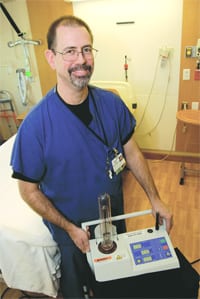Public Awareness Rising Regarding Concussions
The injury has captured its own vocabulary. It was a ’ding’ or ’getting your bell rung’ and was ’graded’ according to its suspected severity. The words somehow combined to downplay the gravity of the physical damage. Thankfully, that’s no longer the case.
Concussion is now being recognized for the severe injury that it is, one that can lead to lifelong debilitating medical conditions. This newfound awareness is long overdue. As schools get back in session and students return to the playing fields, it’s prudent to remind ourselves about the risk and consequences of head injuries.
A concussion is a traumatic brain injury caused by a blow to the head or body that results in a malfunction of the brain. It happens more often than we think. The Centers for Disease Control and Prevention (CDC) estimates that as many as 1.7 million traumatic brain injuries occur in the U.S. annually, with 75{06cf2b9696b159f874511d23dbc893eb1ac83014175ed30550cfff22781411e5} of those being concussions. In Massachusetts alone, public health officials estimate that 36,000 public-school students experience a possible concussion in sports-related activities each year. Consider the following:
A person does not have to be knocked unconscious to suffer a concussion. Loss of consciousness occurs in fewer than 10{06cf2b9696b159f874511d23dbc893eb1ac83014175ed30550cfff22781411e5} of concussions.
There’s no such thing as a mild concussion, even though symptoms — dizziness, headache, nausea, confusion, memory problems, blurred vision, and other behavioral abnormalities — may appear mild.
The severity of a concussion is best judged by how long the symptoms last; the longer they persist, the more severe the injury. Medical research has clearly shown that serious long-term health consequences, such as impaired memory and cognition and even dementia, can occur from concussions if not treated properly.
Concussions can occur in so-called ’non-collision’ sports and even recreational activities. The CDC lists the five leading causes of concussions as bicycling, football, basketball, playground activities, and soccer. Note that two of these — bicycling and playground activities — occur mostly outside of organized sports, without coaches, trainers, or health professionals present, so even a game at the local playground can present risk.
Female athletes are just as susceptible as male athletes. The leading cause of concussion in females in high-school sports is soccer — a game in which girls sustain just as many concussions as boys.
Age is no barrier to injury. Elementary-school youngsters who play youth sports and whose games may not have a health professional in attendance are also at risk. Younger athletes, whose brains are still developing, can be more susceptible to injury and may take longer to heal.
More and more states have wisely recognized the dangers of concussion by enacting new regulations on sports-related head injuries that apply to student athletes in public schools. Private schools and youth leagues are making similar changes.
As an example, to participate in athletics in public schools in Massachusetts, four requirements must now be met: athletes, parents, coaches, and athletic and school medical personnel must undergo training to learn about the risks and consequences of head injuries; athletes and parents must tell coaches about prior head injuries at the beginning of a season; athletes must be removed from play during a game or practice if suspected of a concussion; and written certification from a licensed medical professional is needed to return to play.
Thankfully, the notion of ’toughing it out’ is giving way to the common-sense approach of what’s best for the health of the student athlete. Coaches must now act accordingly: when in doubt, sit them out — whether at practice or in a game.
Education is the key to preventing concussions, and good resources are available. The Mass. Department of Public Health (www.mass.gov/dph/injury) and the CDC (www.cdc.gov/concussion) have valuable information on concussions, and the Mass. Medical Society (www.massmed.org/sportssafety) offers a free coach’s guide that includes an evaluation card, guidelines for return-to-play decisions, and ways to decrease the risk of concussion. The Mass. DPH and Mass. Medical Society have also produced a video report, available at www.physicianfocus.org/concussions. –
Dr. Alan B. Ashare, a physician at St. Elizabeth’s Medical Center of Boston, is Chair of the Mass. Medical Society’s Committee on Student Health and Sports Medicine, Chair of the MIAA Sports Medical Committee, and Chair of the Safety and Protective Equipment Committee for USA Hockey. This article is a service of the Mass. Medical Society.



Comments are closed.